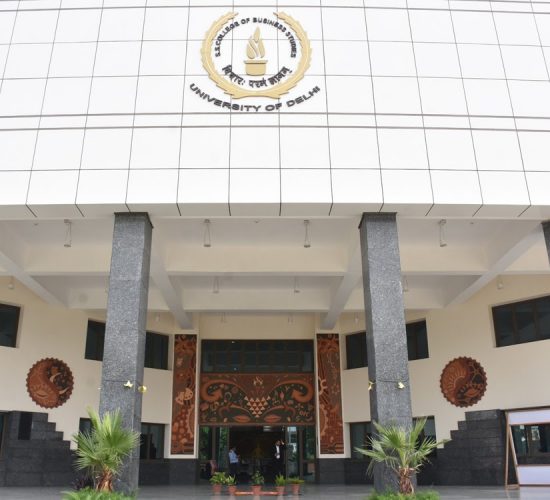Grade "A+" Accredited by NAAC with a CGPA of 3.46
This course introduces students to the fundamentals of digital image processing, and various image transforms, image restoration techniques, image compression and segmentation used in digital image processing.
At the end of the course, students should be able to:
Unit 1
Introduction: Digital Image Fundamentals: Brightness, Adaptation and Discrimination, Light and Electromagnetic Spectrum, Image Sampling and Quantization, Some Basic Relationships between Pixels Types of images.
Unit 2
Spatial Domain Filtering: Some Basic Intensity Transformation Functions, Histogram Equalization, Spatial Correlation and Convolution, Smoothening Spatial Filters: Low pass filters, Order Statistics filters; Sharpening Spatial Filters: Laplacian filter.
Unit 3
Filtering in Frequency Domain: The Discrete Fourier Transformation (DFT), Frequency Domain Filtering: Ideal and Butterworth Low pass and High pass filters, DCT Transform (1D, 2D).
Unit 4
Image Restoration: Image Degradation/Restoration Process, Noise models, Noise Restoration Filters
Image Compression: Fundamentals of Image Compression, Huffman Coding, Run Length Coding, JPEG.
Unit 5
Morphological Image Processing: Erosion, Dilation, Opening, Closing, Hit-or-Miss Transformation, Basic Morphological Algorithms.
Unit 6
Image Segmentation: Point, Line and Edge Detection, Thresholding, Region Based Segmentation.
a. Become familiar with SCILAB/MATLAB Basic commands.
b. Read and display image in SCILAB/MATLAB
c. Resize given image
d. Convert given color image into gray-scale image
e. Convert given color/gray-scale image into black & white image
f. Draw image profile
g. Separate color image in three R G & B planes
h. Create color image using R, G and B three separate planes
i. Flow control and LOOP in SCILAB
j. Write given 2-D data in image file
a. Obtain Negative image
b. Obtain Flip image
c. Thresholding
d. Contrast stretching.
a. Addition of two images
b. Subtract one image from other image
c. Calculate mean value of image
d. Different Brightness by changing mean value
a. AND operation between two images
b. OR operation between two images
c. Calculate intersection of two images
d. Water Marking using EX-OR operation
e. NOT operation (Negative image)
a. Standard MATLAB function
b. Program without using standard MATLAB functions
c. C Program
a. Translation
b. Scaling
c. Rotation
d. Shrinking
e. Zooming
a. image restoration
b. Remove Salt and Pepper Noise
c. Minimize Gaussian noise
d. Median filter and Weiner filter
a. Understand 1-D and 2-D convolution process
b. Use 3×3 Mask for low pass filter and high pass filter
a. Apply FFT on given image
b. Perform low pass and high pass filtering in frequency domain
c. Apply IFFT to reconstruct image
Gonzalez, R. C., & Woods, R. E. (2017). Digital Image Processing. 4th edition. Pearson Education.
Jain, A. K. (1988). Fundamentals of Digital Image Processing. 1st edition Prentice Hall of India.
Castleman, K. R. (1995.). Digital Image Processing. 1st edition. Pearson Education
Gonzalez, R. C., Woods, R. E., & Eddins, S. (2004). Digital Image Processing using MATLAB. Pearson Education Inc.
Schalkoff, D. (1989). Image Processing and Computer Vision. 1st edition. John Wiley and Sons.
Written tests, assignments, quizzes, presentations as announced by the instructor in the class.
Use of ICT tools in conjunction with traditional class room teaching methods
Interactive sessions
Class discussions
image transform, image restoration, image processing, image segmentation.
Disclaimer: Details on this page are subject to change as per University of Delhi guidelines. For latest update in this regard please refer to the University of Delhi website here.
| Cookie | Duration | Description |
|---|---|---|
| cookielawinfo-checkbox-analytics | 11 months | This cookie is set by GDPR Cookie Consent plugin. The cookie is used to store the user consent for the cookies in the category "Analytics". |
| cookielawinfo-checkbox-functional | 11 months | The cookie is set by GDPR cookie consent to record the user consent for the cookies in the category "Functional". |
| cookielawinfo-checkbox-necessary | 11 months | This cookie is set by GDPR Cookie Consent plugin. The cookies is used to store the user consent for the cookies in the category "Necessary". |
| cookielawinfo-checkbox-others | 11 months | This cookie is set by GDPR Cookie Consent plugin. The cookie is used to store the user consent for the cookies in the category "Other. |
| cookielawinfo-checkbox-performance | 11 months | This cookie is set by GDPR Cookie Consent plugin. The cookie is used to store the user consent for the cookies in the category "Performance". |
| viewed_cookie_policy | 11 months | The cookie is set by the GDPR Cookie Consent plugin and is used to store whether or not user has consented to the use of cookies. It does not store any personal data. |

